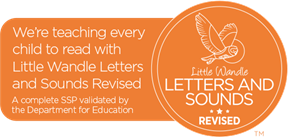- Kendal,
- Cumbria LA8 9LB
Phonics and Early Reading
Subject Leader- June Lowther
Intents
At Selside CE Endowed School, our intent is that every child will learn to read, regardless of background, needs or abilities. We want our children to be fluent, confident readers. They will be exposed to a wealth of stories, poems, rhymes and non-fiction to develop their vocabulary, language comprehension and develop a genuine love of reading and a keen interest in a range of texts.
We work to inspire them to become passionate life-long readers who enjoy books and have a desire to read for pleasure. In order for the children to have the will to read, and be able to read to learn, they need to have secure skills in reading so that they can read with fluency and comprehension.
Reading is at the heart of our whole curriculum underpinning every subject area. We want every child to read widely, and to gain a rich knowledge across the curriculum. By offering a wide range of texts, we aim to broaden their minds and experiences to allow them to empathise with the world in which they live and support the development of their cultural capital.
Reading is such an important life skill that it is imperative we enable them to become independent readers who can easily process information, fully engage in all learning and be well prepared for their next stage of their education.
Implementation 
We teach early reading through the validated systematic, synthetic phonics programme ‘Little Wandle Letters and Sounds Revised’ .
Right from the start of Reception, children will have a daily phonics lesson which follows the progression for Little Wandle Letters and Sounds and this continues in Year One to ensure children become fluent readers.
In Reception, we build from 10-minute lessons, with additional daily oral blending games, to the full-length lesson as quickly as possible. Each Friday, we review the week’s teaching to help children become fluent readers. Children make a strong start in Reception: teaching begins in Week 3 of the Autumn term.
We follow the Little Wandle Letters and Sounds Revised expectations of progress (see below). Four new phonemes and their corresponding graphemes are taught (GPCs) each week and they are then used in the final lesson of the week to review the week’s learning. Children will also learn tricky words during these sessions.
In the Autumn and Spring term, Reception learn phase 2 and phase 3 GPCs and then will spend the final term learning phase 4. Year 1 begin the Autumn term with 3 weeks of revision of phases 2, 3 and 4 before learning phase 5, which will be completed by the end of the year. Year 2 and Year 3 children will begin the year by revisiting phase 5 and other previously taught phases to ensure all children are completely confident with applying these GPCs in both their reading and also their writing. (please see the overview here for what this progression looks like).
Half termly assessments take place through Reception and Year 1 to help inform future teaching and help identify children who have gaps in their phonic knowledge and need additional practice. Daily assessment of learning also takes place within the classroom so staff can quickly identify any children who are in danger of falling behind and provide the appropriate daily ‘Keep Up’ intervention.
For support with the pronunciation of the phonemes taught, please refer to the videos below.
Selside Phonics Programme Overview: Reception and Year 1
Pronunciation guide 1 – for Reception & Year 1
Pronunciation guide 2 – for Reception & Year 1
How to say Phase 3 sounds – Year 1
How to say Phase 5 sounds – Year 1
Reading workshop PowerPoint for parents
Reading Practice Sessions
Children in Reception, Year 1 and 2, read fully decodable books with an adult 3 times per week during our ‘Reading Practice’ sessions. These books are then sent home for children to build their reading fluency and showcase their developing skills and phonetic knowledge to their parents/carers.
These 3 reading practice sessions each have a different focus; decoding, prosody and comprehension. Our reading books in Reception, Y1 and Y2 are ‘Little Wandle Letters and Sounds Revised Big Cat books’.

Supporting your child with reading
Although your child will be taught to read at school, you can have a huge impact on their reading journey by continuing their practice at home.
There are two types of reading book that your child will bring home in Reception and Year 1: Reading practice book and Sharing book
Reading practice book
This book has been carefully matched to your child’s current reading level. If your child is reading it with little help, please don’t worry that it’s too easy – your child needs to develop fluency and confidence in reading. Listen to them read the book. Remember to give them lots of praise – celebrate their success! If they can’t read a word, ask them to decode (sound it out) and blend it. After they have finished, talk about the book together.
Sharing book
In order to encourage your child to become a passionate lifelong reader, it is important that they learn to read for pleasure. The sharing book is a book they have chosen for you to enjoy together. Please remember that you shouldn’t expect your child to read this alone. Read it to or with them. Discuss the pictures, enjoy the story, predict what might happen next, use different voices for the characters, explore the facts in a non-fiction book. In addition, after reading the book you can pick out some words and help them to expand their vocabulary by discussing alternatives for these words. The main thing is though that you have fun!
At the end of Year 1, children complete a Phonics Screening Check required by the Government to assess where they are.

